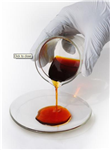Officials from the U.S. Environmental Protection Agency (EPA) and the U.S. General Services Administration (GSA) toured e-Green Management of Islip Terrace, New York to highlight the environmental, public health and economic benefits of recycling electronics.
NOAA's updated Annual Greenhouse Gas Index (AGGI), which measures the direct climate influence of many greenhouse gases such as carbon dioxide and methane, shows a continued steady upward trend that began with the Industrial Revolution of the 1880s.
Pipe-in-pipe systems are now commonly used to distribute water in many homes. The inner pipe for drinking water is made of a plastic called cross-linked polyethylene (PEX). Are these pipes harmful to health and do they affect the taste and odour of drinking water?
During the summer 2003, high temperatures and drought conditions in Europe led to a reduction of the wind force with direct consequences on the wind energy power, reduced by 22 percent. The study was recently published in Journal of Climate.
A team of Virginia Tech researchers is working to characterize the genes involved in wood formation in poplar trees with the goal of improving the quality and quantity of wood as a feedstock for biofuels production.
Both climate change and humans were responsible for the extinction of some large mammals, according to research that is the first of its kind to use genetic, archeological, and climatic data together to infer the population history of large Ice-Age mammals.
Plain, sloping roofs can collect up to 50 percent more rainwater than flat roofs with gravel.

Pesticides and pollutants are related to an alarming 450 percent increase in the risk of spina bifida and anencephaly in rural China, according to scientists at The University of Texas at Austin and Peking University.
A University of Minnesota team of researchers has overcome a major hurdle in the quest to design a specialized type of molecular sieve that could make the production of gasoline, plastics and various chemicals more cost effective and energy efficient.

A team from the University of Wisconsin believes they created a material that could be used to capture energy from respiration.
The network of electric-vehicle (EV) charging stations in Germany is still relatively sparse, but their number is growing rapidly. The majority of roadside charging points take the form of steel-clad pillars. A group of researchers has set out to develop an alternative design based on environmentally compatible materials.
Researchers with the Sierra Nevada Research Institute (SNRI) at the University of California, Merced, have received a $2 million grant from the National Science Foundation to expand on a prototype system that uses a network of wireless sensors to track snowpack depth, water storage in soil, stream flow, and water use by vegetation in the Sierra — information that is key to efficient usage of such a scarce resource.
In October's issue of Physics World, Phil Marshall, an astrophysicist at the University of Oxford, calls on physicists to pull their weight when it comes to climate change, drawing on his own research showing that astronomers average 23,000 air miles per year flying to observatories, conferences and meetings, and use 130 KWh more energy per day than the average U.S. citizen.

Researchers led by MIT professor Daniel Nocera have produced something they’re calling an “artificial leaf”: Like living leaves, the device can turn the energy of sunlight directly into a chemical fuel that can be stored and used later as an energy source.
Electrical energy storage and its management is becoming an urgent issue due to climate change and energy shortage.
When a species recovers enough to be removed from the federal endangered species list, the public trust doctrine – the principle that government must conserve natural resources for the public good – should guide state management of wildlife, scientists say.
A team of Purdue University researchers has invented a prototype water-disinfection system that could help the world's 800 million people who lack safe drinking water.

Iowa State University's Robert C. Brown keeps a small vial of brown, sweet-smelling liquid on his office table.
UC Davis researchers have compared seven earthquake forecasts (including their own) that were submitted to a competition organized by the Southern California Earthquake Center.
Researchers with the DOE's Joint BioEnergy Institute (JBEI) have identified a potential new advanced biofuel that could replace today's standard fuel for diesel engines but would be clean, green, renewable and produced in the United States. Using the tools of synthetic biology, a JBEI research team engineered strains of two microbes, a bacteria and a yeast, to produce a precursor to bisabolane, a member of the terpene class of chemical compounds that are found in plants and used in fragrances and flavorings. Preliminary tests by the team showed that bisabolane's properties make it a promising biosynthetic alternative to Number 2 (D2) diesel fuel.